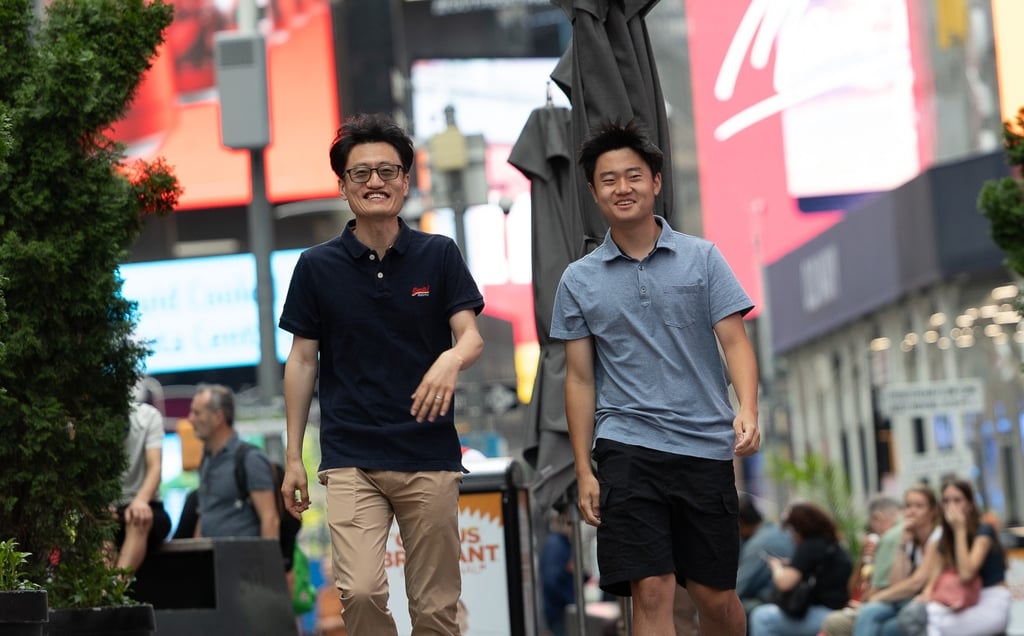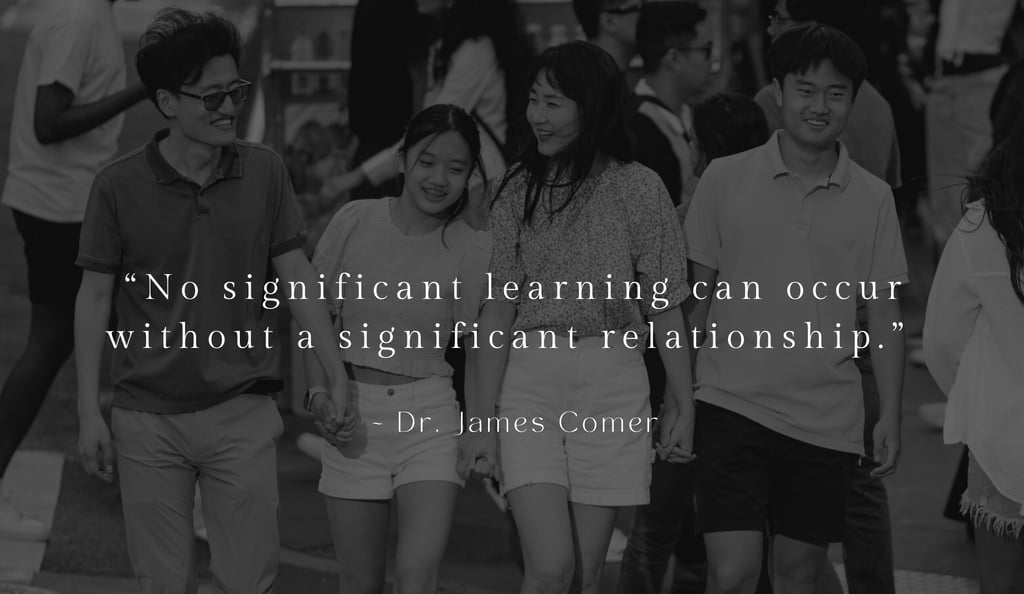“Follow Your Passion” didn’t help my 16-year- old. Here is what I teach him instead.
8/3/20255 min read


Most students freeze when it’s time to find a research idea.
They’re told, “Follow your passion.” But what if you don’t know what your passion is yet?
Earlier this year, my 16-year-old son wanted to start a research project and didn’t know where to begin.
“Follow your passion” advice didn’t help him. In fact, it made him more stuck, with the pressure to pick the “perfect idea,” the fear of not being good enough, the desire to make an impact — and the confusion of not knowing where to begin.
Here’s the truth:
Most teens don’t know what they’re passionate about yet.
And “follow your passion” assumes you already have one.
Real passion comes after you get good at something, not before. After you’ve explored, practiced, and started to care.
Second, "follow your passion" ignores the hard work.
All successful endeavors involve the boring and the hard. If passion is the sole motivator, the moment things get hard, then "ah, I don't feel passionate any more."
So instead of chasing passion, I asked something different.
Not: What’s your favorite subject?
But: What have you noticed? What’s weird, frustrating, or surprising in the details around you?
We practiced turning that observation into curiosity, turning curiosity to questions. And from questions to a scientific research idea.
Start with his own original question and iterate — something he created, something he actually cares about.
Seven months later:
He submitted his research to two academic conferences — both were accepted. Last month, he presented in Lisbon and received great feedback from other researchers.
Here are the 5 things I learned from this journey.
1. You don’t need to be an expert to help your child. In fact, it’s better if you’re not.
I was helping my son with his psychological question on the normalization of misbehavior. Do you know what is the most useful sentence I ever said to him?
“...this question is actually quite hard and let me study it together with you.”
“.... now I can feel why you are struggling.”
When I am not the all-knowing authority, my lack of knowledge connects me to him.
This empathy creates a bond far more powerful than any instruction.
2: Shift the mindset from being a student to becoming a researcher.
They partly correlate. But they are distinct modes of thinking.
A good student: absorb existing knowledge.
A good researcher: discover new knowledge.
Many lose the sense of wonder when we grow up. Doing research with your teens helps restore it.
3. Bond your teens through inquiry
In most life experience, parents dominate.
We believe we know more. We lecture our teens. We bestow knowledge. We stand above.
In areas of teens’ interests: sports, games, gadgets, high school dramas, online gossips,... children dominate.
They see us as out of touch, old fashioned and irrelevant. We stand below.
Neither occasions cultivate good relationships. “Acting as equals” is rare.
Research is different. It’s the great equalizer.
In research, nobody has all the answers.
Your teen brings their personal observations, and fresh perspective
You bring maturity, methods, and emotional support.
Sharing the journey into the unknown offers the best occasion to bond with your teens.
We stand beside, not above.
4: Embrace the Process, Not the Product.
Authentic research is rarely a straight line to the right answer. It is full of dead ends and "failures."
These moments are not just acceptable; they are a fundamental part of the scientific method and essential for learning.
Parents’ role: Celebrate the questions, the mistakes, the surprises, and the small discoveries along the way.
I helped a friend's high schooler who studies how remote work since COVID impacted the CO2 emission in cities.
After six months and hundreds of hours of data gathering, cleaning, processing, and modeling, she found a critical flaw in the original dataset — and her modeling results made no sense at all.
These moments are devastating. But these are the most precious part of learning.
That moment of "failure" became the turning point.
Five months later, with much emotional ups and downs, with even harder effort, she found an alternative way to match the data sets, reshaped her project, and ultimately published her finding in a major academic research journal.
Even if she hadn’t, the real win was already there: she learned how real research works — messy, humbling, and full of set backs.
Easy to say. Hard to do.
5: Normalize fear
Fear of failure is one of the biggest hurdles for students, often driven by the pressure to succeed.
Parent's role: Normalize fear by sharing your own mistakes.
The word “scientific research” sounds big, intimidating. Only genius can do.
My 15-year-old daughter explored how A.I. can help teens have more face-to-face conversations. Her research poster was selected for the MIT RAISE AI & Education Summit — but presenting it terrified her. She’s naturally shy, and the thought of speaking to a room full of strangers is intimidating.
The night before the presentation, she couldn’t say a word -- she refused even to try.
She was scared. I was anxious.
Ironically, her project was about helping teens take social risks — yet she couldn’t face the room.
Then I tried giving her speech myself — and stumbled. I forgot the words. My face flushed. Public speaking is scary for everyone.
When she saw me struggling but still trying, she joined me.
Once fear is normalized, the rest is effort.
She practiced her talk for hours: from silence, tears, fragmented sentences and scattered thoughts to coherence and clarity.
The next day, she stood on the podium at MIT 10-250 and delivered her talk — confident and joyful.
She walked down the stage with a big smile. This is the most beautiful moment I ever see -- the moment of joy only possible because of the fear that came before it.
Years from now, those project details will fade. But what we will remember are the shared frustration, late-night dry run for the presentation, and the mutual pride in a hard-won insight.
We are co-authoring our best family stories.
James Comer once said:
“No significant learning occurs without a significant relationship.”
My experiences inspired me to run a live workshop. To give more students the same breakthrough.
Albert Einstein said “Everything should be made as simple as possible, but not simpler.” My goal is to make scientific research simple without lowering the standards. I want to teach beginner researchers to think like a real scientist and to:
Start by observing — and be curious, even if you feel stuck or ordinary
Translate your own observations into scientific questions — something you created, something you actually care about
Model the best. Learn by doing and learn by mimicking
Shift your mindset from being a student to becoming a researcher.
A clear next step — whether that’s entering a science fair, presenting at a conference, or just exploring further
If you’ve ever wanted to do research, this is the most accessible and structured way I’ve found to begin.
Click here for Scientific Research Made Simple workshop details.
Closing thoughts: Will A.I. Change All These?
I am leading a research program Mens, Manus and Machina: AI's impacts on the future of learning and future of work, a research collaboration between MIT and Singapore National Research Foundation.
We are developing a suite of AI-enabled technologies, experiments and pedagogy theories.
Indeed AI can help with many aspects of learning.
But it will not change the following:
AI cannot help us build relationship with our children. In fact we should caution that our teens do not bond more with AI than with us.
When AI scaffolds our children, it improves their performance but NOT learning. AI reduces friction of learning. But it is through friction that we learn. There is no shortcut. Effort is the algorithm.


Contacts
jinhua@jzresearch.org